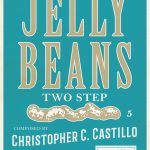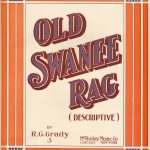Writing Cardinal Rag
While not his first composition, Cardinal Rag marked the first piece that utilized conventional ragtime syncopation. Christopher C. Castillo recalls how his first rag came to be:
It was summer of 2014 when I started writing Cardinal Rag. From the beginning I could tell that it was something new, entirely different from what I had been writing up to that point. Until then, I had written a number of marches and assorted piano solos inspired by ragtime, but this was my first serious attempt at writing a proper rag. I had spent a considerable amount of time researching ragtime–listening to pieces by different writers, reading books and blogs, studying sheet music–and I felt like I had a pretty fair understanding of what made something a true rag. I had also begun to study chord progressions, which I hadn’t used in the past (properly anyways). All of this set me up for a more serious style of writing than I had practiced in the past.
From the beginning, I knew it was going to be Cardinal Rag. The idea was inspired by Lamb’s Ragtime Nightingale and Ragtime Bobolink which are favorites of mine. A cardinal is my university’s mascot, so it was a natural first choice. For weeks I listened to birds around my house and university. Finally, one afternoon the opening notes popped into my head and I went from there. The first section originally featured octaves as the repeating element, which fit the ending progression, but were replaced with the grace notes for a more bird-like texture. The second strain was a bit of a miracle, practically writing itself. I wanted to integrate more harmonies into the piece, so I did in the second half. One element that sets Joplin’s rags apart are his often sentimental harmonies where strains end. I wanted a similar effect for my second strain. The result is an expansion of the motif with simple major harmonies.
The second half takes on a different texture entirely. The transition from the refrain to the trio was actually the remnant of the original trio. The key change was introduced and the pace of the rag changed by using simple ragtime patterns. The final strain was made intentionally repetitive. Many classic rags utilize a repetitive pattern to indicate the finale. The pattern I came up with was based on bird calls. I added the slight change in syncopation for a more interesting texture.
Cardinal Rag may not the finest rag ever written, but it is a competent composition full of energy and character. It was also an integral part of my growth as a composer. I never could play it right, though.






